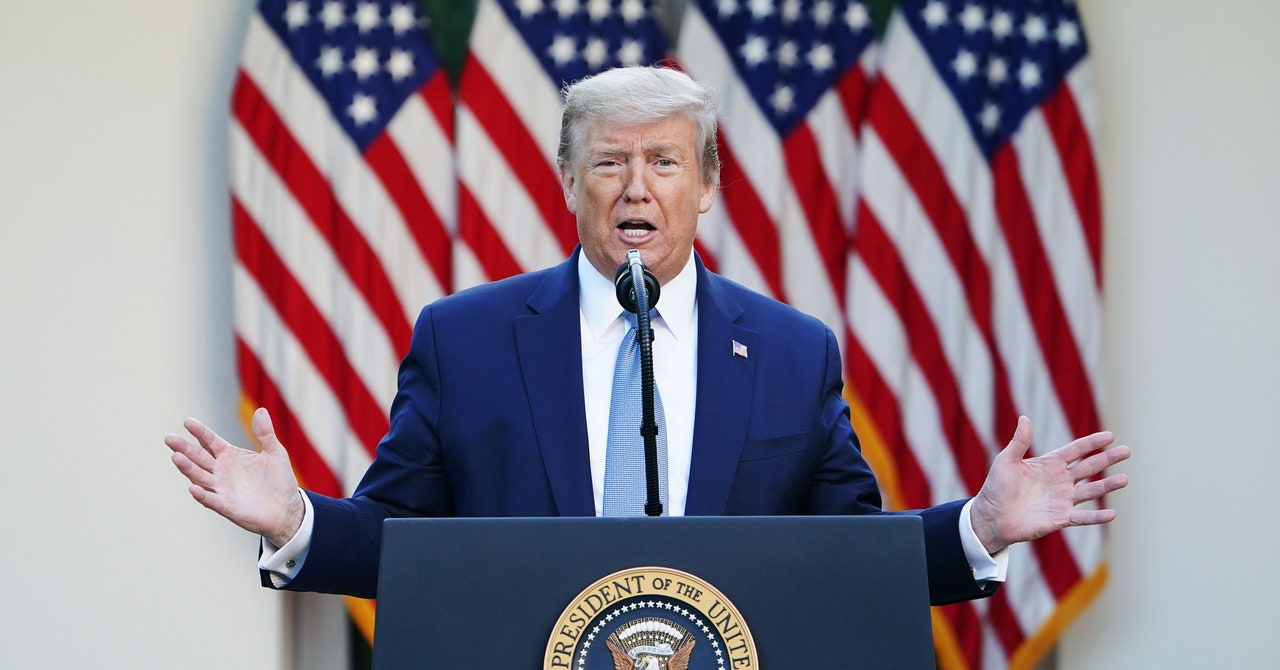The White House on Thursday introduced what President Donald Trump called a “phased and deliberate approach” to lifting social-distancing requirements intended to slow the spread of the pandemic disease Covid-19 in the United States. At least three coalitions of states across the US are already trying to work out their own approaches—something the president initially said wasn’t up to them, before recanting. The White House plan, finally released into the wild, still seems to be playing catch-up. It surprisingly aligns with the kinds of things multi-state coalitions are saying about their own efforts to help their economies get moving again, but lacks specific guidance about how—with no offers of financial or structural aid, and no milestones to determine success. That makes public health experts think the plan is intended not so much to help states succeed, but scapegoat them if they fail.

Should I Stop Ordering Packages? (And Other Covid-19 FAQs)
Plus: What it means to “flatten the curve,” and everything else you need to know about the coronavirus.
Scientists, public health experts, policymakers, and businesspeople have been urging caution over rolling back stay-at-home orders, limits on mass gatherings, and school closures; some research has shown that even in places with the most hardcore social distancing implementation the disease could return cyclically for the next two years. But pressure from Republican lawmakers and small but vocal groups of protesters in some states (fomented, on Twitter, by the president) has pushed in the opposite direction.
“Based on the latest data, our team of experts now agrees that we can begin the next front in our war, which we’re calling, ‘Opening Up America Again.’ And that’s what we’re doing: We’re opening up our country,” Trump said at a press conference introducing the plan. “As I have said for some time now, a national shutdown is not a sustainable long-term solution. To preserve the health of our citizens, we must also preserve the health and functioning of our economy. Over the long haul, you can’t do one without the other.”
Economists and public health researchers largely dismiss this dichotomy as false. Even under the coldest benefit-cost calculations, losses to the economy so far still haven’t outweighed the lives saved by social distancing. And research into the “non-pharmaceutical interventions” like social distancing and business closures that followed the 1918 influenza pandemic shows that thse fast, aggressive interventions resulted in faster, bigger economic bounces when the pandemic was over. Still, it’s clear that people are suffering—5.2 million people made unemployment claims the week of April 9, according to the US Department of Labor, and a $349 billion federal program to lend money to small businesses in coronavirus-related trouble officially ran out of money on Thursday. California governor Gavin Newsom on Friday described his state’s economy—the nation’s largest—as being in a “pandemic-induced recession.”
But pretty much everyone agrees that getting rid of these interventions too soon means that Covid-19—which has in five months killed 150,000 people around the world, 35,000 of them in the US—will roar right back. So what to do? The Trump administration thinks everyone just has to ease into it. “Our approach outlines three phases in restoring our economic life. We are not opening all at once, but one careful step at a time. And some states will be able to open up sooner than others,” Trump said. “Now that we have passed the peak in new cases, we’re starting our life again, we’re starting rejuvenation of our economy again, in a safe

